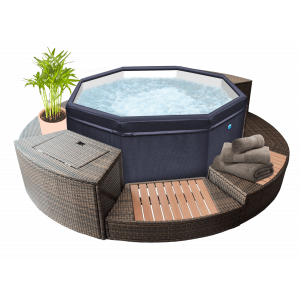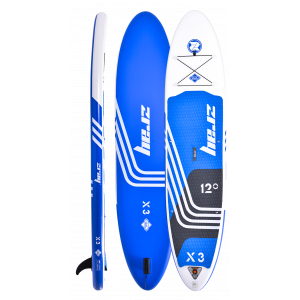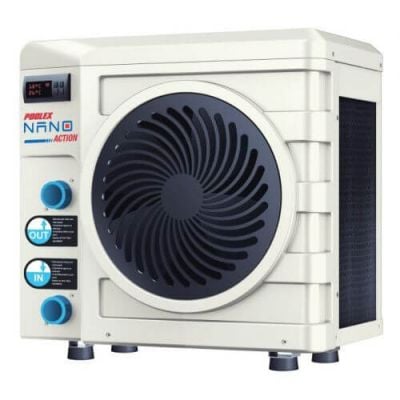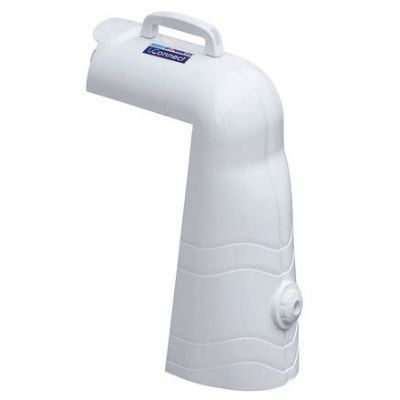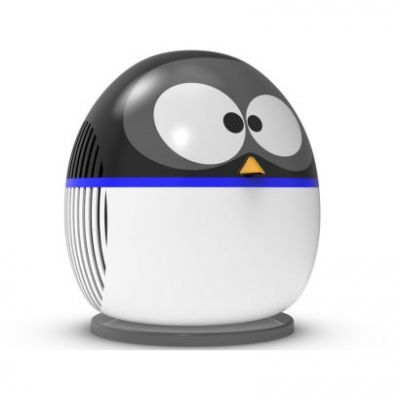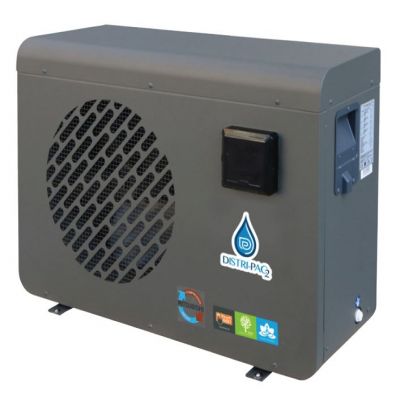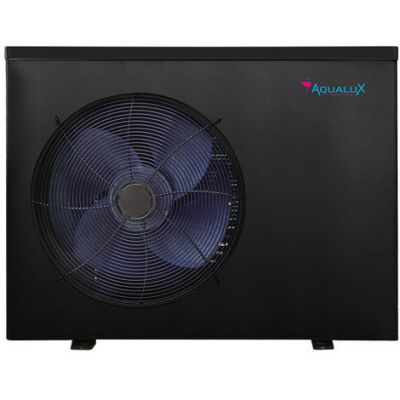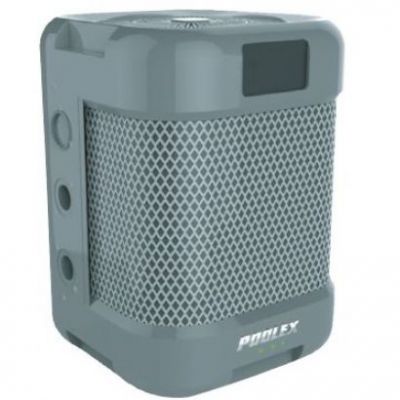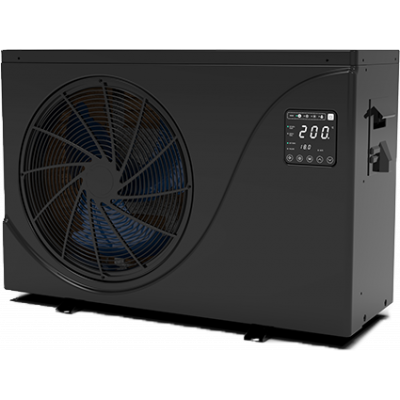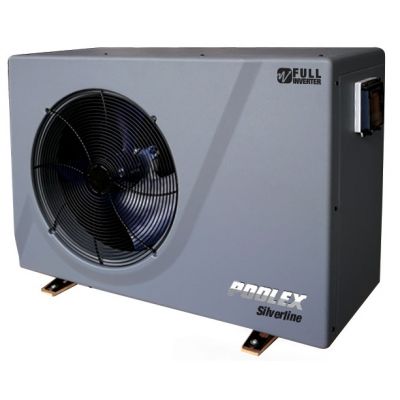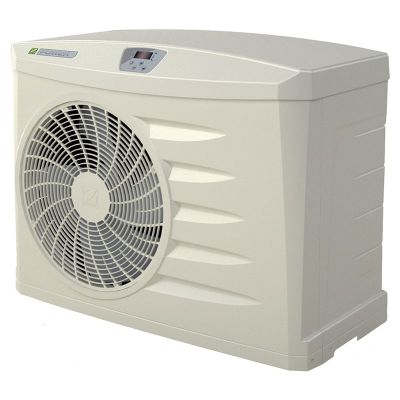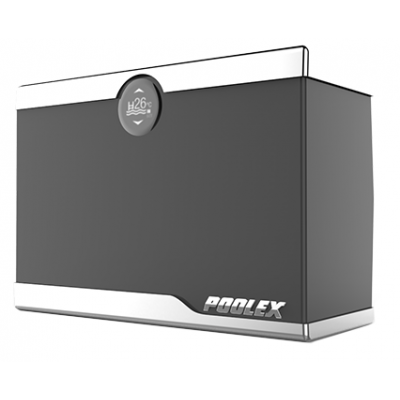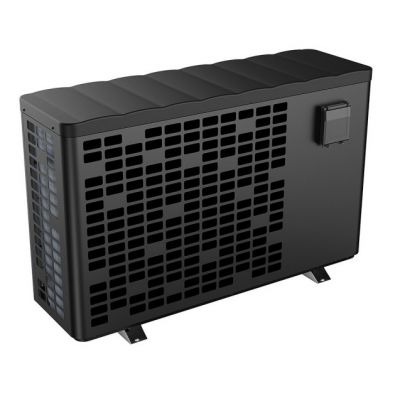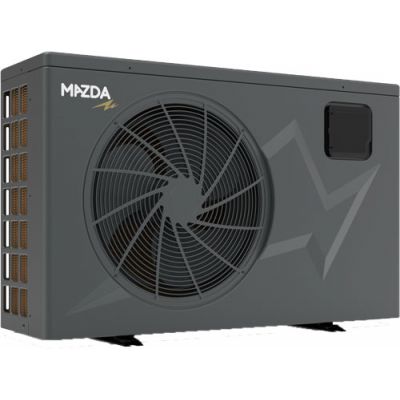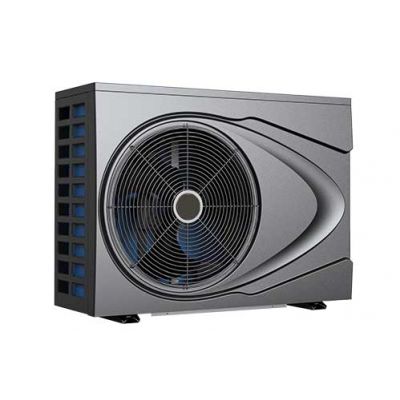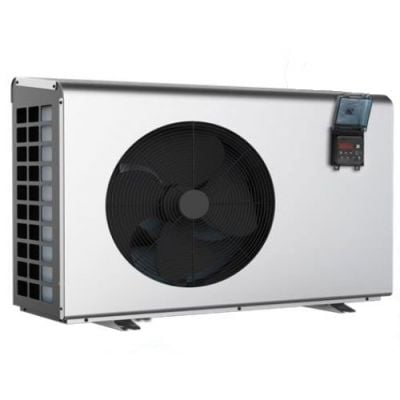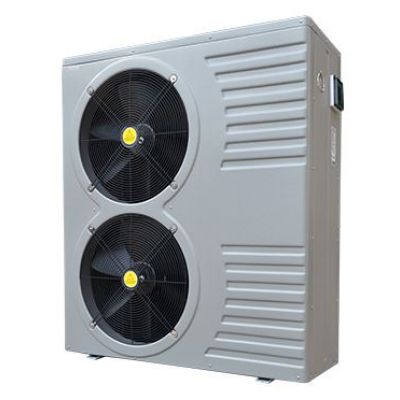Water heat pump for your swimming pool
27 products
To enjoy the benefits of your swimming pool, you must buy a heater adapted to your pool. Many solutions exist: we invite you to discover the swimming pool heat pump. The advantages of the heat pump? The operation of the swimming pool heat pump is very simple. It takes energy from the air, transforms it into heat and returns it to the pool water. In addition to being easy to install, the heat pump is also very efficient. In addition, in the long term, it is very economical, because it consumes 4 to 6 times less than an electric heater. If you want to combine ecology and economy to heat your pool, we recommend that you choose this system.
Any questions? Consultour guide onheat pumps.
MAG swimming pool heat pump - POOLEX
PENGUIN swimming pool heat pump
Silverline heat pump - Poolex
FSN Astralpool swimming pool heat pump
Aqualux INVERTER swimming pool heat pump
Straight-Line heat pump: vertical
Poolex Q-Line 7 vertical heat pump
MAZDA heat pump: SERIES
VSP heat pump - INVERTER - AquaSphere
DISTRIPAC FI swimming pool heat pump
Zodiac swimming pool heat pump: POWER
SILENT MAX Fi heat pump: Ultra quiet
VSN heat pump - INVERTER -Astralpool
NEVI heat pump: 4 seasons - 25°C
PLATINIUM inverter heat pump
MAZDA heat pump: ORIGINAL: FULL INVERTER
Three-phase swimming pool heat pump
HPO Full Inverter Zodiac heat pump
Public swimming pool heat pump
Public swimming pool heat pump FULL INVETER PRO INV
Choose a heat pump suitable for your swimming pool
Operation of a heat pump
The principle of a heat pump orPACis to recover heat by capturing the calories present in the air in order to transmit them into the water.
The evaporatorcaptures the ambient air then transmits it to therefrigerant|| |1611. De base liquide, ce fluide va se transformer en gaz au contact des calories captées. Le compressorcompresses the gas under high pressure so as to further increase its temperature. It is then the turn of thecondenserto transmit the refrigerant gas to the water in the pool which, once cooled, becomes liquid again, while remaining under high pressure. Finally, thereducerhas the role of reducing the pressure of the liquid and its temperature. This liquid then returns to the evaporator to begin a new cycle.
|
|
The heat pump glossary:
-COMPRESSOR: Electrical device of the heat pump in which the gas (refrigerant) is compressed, which allows its temperature to be raised..
-EXPAN|| |1642 : Dispositif inverse du compresseur. Le gaz y perd sa pression. Le détendeur est essentiel pour réguler le débit du gaz (fluide frigorigène) dans le circuit frigorifique..
-TITANIUM EXCHANGER: Consisting of a simple or double coil, it allows the refrigerant gas to transfer its heat to the pool water. It is made of titanium to avoid any corrosion. Twisted Tech technology increases heat exchange by approximately 20%.
-EVAPORATOR: Similar to an automobile radiator, the refrigerant gas y heats up on contact with air before being compressed again..
-REFRIGERANT FLUID: Fluid confined in the pump heat which ensures heat transfer during its phase changes (gas, liquid). The operation of thermodynamic machines (refrigerator, heat pump) is based on the capacity of refrigerants to vaporize and condense at ambient temperature..
What is the coefficient of performance for a pump heat pump?
TheCOPof aswimming pool heat pump is the ratio between the thermal power of the heat pump and the electrical power.
The COP makes it possible to calculate the ratio between the energy supplied in relation to the energy consumed by the heat pump. The higher the number, the more efficient the heat pump!
Choosing the right pool heat pump?
The performance coefficient is an important but also theoretical index. Other criteria must be taken into account when choosing your heat pump:
-The dimensions of your pool: the power of the pump must be made according to the dimensions of your pool in order to heat quickly enough without oversizing your pump and consuming too much.
-The climatic environment|| |1681 : Un point très important car un même modèle naura pas le même résultat dans deux régions dont le climat est totalement différent.
-The possession of a bubble cover: a very important point because the bubble cover allows you to retain the heat produced and therefore reduce energy consumption and optimize the performance of your heat pump.|| |1688
Comment calculer le volume de votre piscine pour calibrer sa pompe à chaleur ?
The first step is to calculate the volume of your pool. There are several methods to calculate your volume.
Start by measuring the average height of your swimming pool: ProM = (ProMax + ProMin)/2
Multiply this result to the area of your swimming pool, you have the volume of water in your swimming pool in m3. Then here is a table that allows you to quickly calculate with common shapes in the swimming pool world.
Important for a heat pump, the climatic environment: ?
You must determine in which sector of France the construction site is located in order to correctly calibrate your heat pump. Here is a map that allows you to determine if you are in a mild, temperate or cold climateInstallation and maintenance of your heat pump
Installing a swimming pool heat pump is a crucial step to ensure its proper functioning and durability. At Distripool, we have designed our heat pumps to be as intuitive and simple to install as possible. Each pump comes with a detailed instruction manual, illustrated step by step to make the process easier. Additionally, our pumps are designed to be compact and aesthetically pleasing, meaning they can be discreetly placed close to your pool without cluttering the space or spoiling the view.
Regular maintenance of your heat pump is essential to maintain its efficiency and extend its lifespan. This includes cleaning filters, checking electrical connections and monitoring refrigerant levels. Once again, Distripool makes this easy by providing clear maintenance guides and offering a range of products and accessories specifically designed for the maintenance of heat pumps.
The different types of heat pumps:
There are several types of heat pumps, each adapted to specific needs and environments:
● Air/water heat pump: This is the most common type for swimming pools. It captures heat from the outside air and transfers it to the pool water. It is effective in most climates, but may be less effective in very cold regions.
(on sale on distripool.fr)
● Water/water heat pump: This pump uses heat from a water source, such as a well or groundwater, to heat the water of the swimming pool. It is very effective, but requires access to a constant water source.
● Ground/water heat pump: It captures heat from the ground to heat the pool water. Although its installation is more complex and expensive due to the need for digging, it provides consistent efficiency because the ground temperature remains relatively stable all year round.
● Air/air heat pump: Although less common for swimming pools, this pump captures heat from the outside air to heat the air inside a home. It is mainly used for domestic heating.
Each type of heat pump has its advantages and disadvantages, and the choice will depend on your geographic location, your budget and your specific needs. It is always recommended to consult a professional to determine the type of pump best suited to your situation.
The different types of air/water heat pump:
Principle of the On/Off heat pump:
The On/Off heat pump is characterized by a unique operating mode from a power point of view.
When the desired temperature is reached, the pump suddenly turns off, only to restart as soon as the water cools, unfortunately resulting in significant amperage fluctuations.
This process repeats itself regularly, putting a strain on the compressor and inevitably causing surges each time it restarts.
This intermittent operation accelerates the wear of the pump and reduces its performance over time.
The water temperature also fluctuates, often alternating between hot and lukewarm, which can be unpleasant for users at times.
Despite these drawbacks, the On/Off heat pump remains an efficient and economical choice: it is particularly suitable for seasonal use, for example from April to September, by effectively regulating the temperature during the summer.
Principle of the Inverter heat pump
Unlike the On/Off model, the Inverter heat pump starts gradually, thus avoiding peaks of intense operation.
Its autonomous management allows a rapid rise in water temperature at the start of the season and the closer the desired temperature approaches, the more the system reduces the operation of the compressor to adjust to the necessary power.
Inverter models generally have 3 to 4 power levels, adjustable according to heating needs.
The Full Inverter models also offer fine regulation of thecompressorand thefan , even theelectronic card allowing the pump to produce very little noise while providing the user with economical and reliable operation.
This type of technology gives the pump increased durability, a higher COP (coefficient of performance) and allows less noisy operation.
The use of an Inverter heat pump allows significant energy savings, of the order of 10 to 20% compared to a conventional pump, while guaranteeing optimal bathing comfort thanks to a temperature of the constant water.
To optimize continuous operation, it is recommended to combine the Inverter type heat pump with a variable speed swimming pool filtration system
Different type of ventilation for your Swimming pool heat pump:
Another factor to take into account is the blower technology. Most heat pumps have a front blower. In rare cases, it has vertical ventilation which may be more suitable in certain installations with reduced space.
For several years, there have been side ventilations: this provides advantages: By blowing the air on both sides, it thus prevents the problems encountered by a traditional front or rear blower heat pump , by reducing the space that must be left for it. By diverting the air return away from the pool area, the pump becomes quieter.
The operating temperature:
There is another important data , the minimum operating temperature. Indeed, we know that the hotter it is outside, the more efficient the heat pump is. You must therefore determine what time of year you want to use your heat pump.
There are different minimum operating ranges depending on the model: + 10, - 5°C, - 7°C or -25°. Below, the heat pump cuts out and no longer works.
Depending on the period, it will be necessary to greatly oversize the power of the heat pump and take different operating ranges.
The options for a heat pump: || |1765
Nous avons vu que il existe plusieurs technologies de compresseur, ventilateur et carte électronique (ON/OFF vs INVERTER). Plusieurs technologie de position de ventilation. Mais au dela de cela, il existe des options comme : Wifi, réversible, etc.
A voir Aussi
The Cookies
With cookies, enjoy a better experience on our site. We use them for statistical, analysis or advertising purposes.
Find out moreAnalytical cookies| ||2046
Ces cookies nous permettent de faire de l'analyse statistique et améliorer notre site. Pour les accepter, veuillez cocher la case.
Cookies marketing
These cookies allow us to offer you an ever more optimized experience with the help of our partners.
Essential cookies
These cookies are necessary for the operation of the site for your purchasing experience and your customer account. You cannot refuse them.


